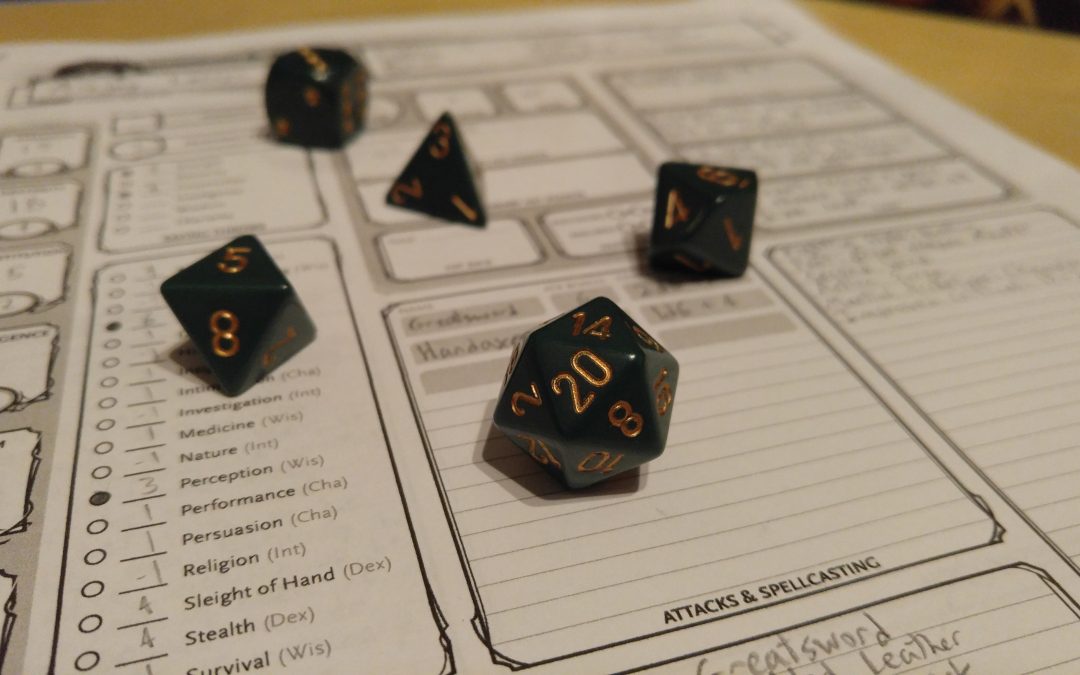If you’ve spent any amount of time with the right kinds of nerds, chances are you’re no stranger to games like Dungeons & Dragons and Pathfinder. But while these games are most commonly associated with various dice-rolling shenanigans, the players are actually taking part in several excellent creative exercises.
The Dungeon Master and their “Dungeon”:
For those who aren’t familiar, the Dungeon Master (or DM) is the one in a group of 3-6 (on average) players who creates the entire game world that the others play through. This means they have the ability to make up the rules as they go.
For this reason, the DM will have a lot of worldbuilding on their hands. The DM won’t always know what the players want to do or where they’ll want to go, so they’ll often draw a map of their lands and cities, put a government system into place, and then populate them with NPCs (Non-Player Characters) for the players to interact with. Written rules do exist for economies, pantheons, histories of creature races, and so on, but the DM is free to overwrite any of it for their own universe.
This naturally translates to writing as an in-depth study in worldbuilding. Writers can use this same tool by making a map of the locations in the story (even if they’re based on real-life countries, cities, or buildings), finding meaningful and precise details to describe the scene, and dropping in unique background characters to add a flavorful crowd or clientele.
The word “worldbuilding” probably has the closest association with the fantasy and sci-fi genre, but a distinct setting is something almost any good story will have.
The Players and their Characters:
The players in the DM’s campaign each create their own character who they roleplay as. Being that D&D is primarily a cooperative game, the players will want to build a diverse party to fill certain roles, depending on the nature of their quest.
This is something a writer should keep in mind. A story’s characters should fulfill certain roles in the story so that their inclusion is justified. This doesn’t mean that each central character should take a turn moving the plot forward; rather, they should have some part in developing the work as a whole, whether that be in grabbing the key to the chest while the main character fights the guardian, or encouraging him when he begins to lose hope.
It’s then the DM’s job to introduce conflict to the party, in the form of monster encounters, conversations with royalty, or even splitting up the party. These situations force each player to think in character to determine how their character would react.
This acts as an excellent exercise in getting to know the characters a writer creates, because they’ll learn more about their characters as they’re thrust into situations the writer may not have thought of. While such unusual situations may never appear in the writer’s work, knowing how their characters would react in the faces of adversity is an important aspect of character building.
In my experience, much of the fun of roleplaying largely depends on the group. So if you can find the right group of people, games such as D&D offer exercises that could improve your writing and storytelling skill set.
Meet the blogger:
 GRANT BRENGMAN is a fiction writer, geek, gamer, and Sagittarius. He is a recent graduate from the creative writing BFA program at Hamline University, and is spearheading the creative direction in an indie game development company established with his friends. His dream is to one day sit behind a desk proofreading for forty hours a week.
GRANT BRENGMAN is a fiction writer, geek, gamer, and Sagittarius. He is a recent graduate from the creative writing BFA program at Hamline University, and is spearheading the creative direction in an indie game development company established with his friends. His dream is to one day sit behind a desk proofreading for forty hours a week.


